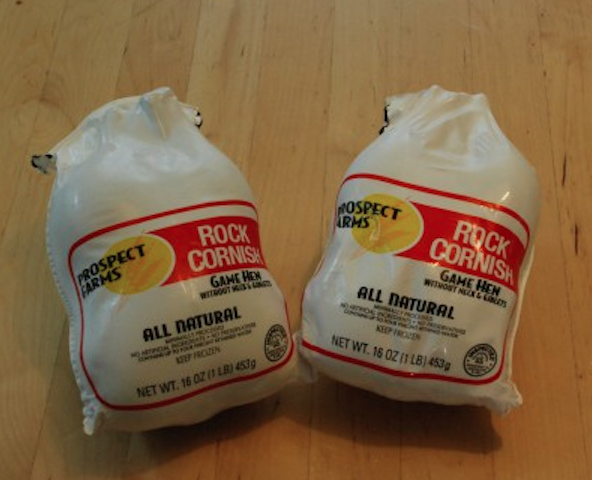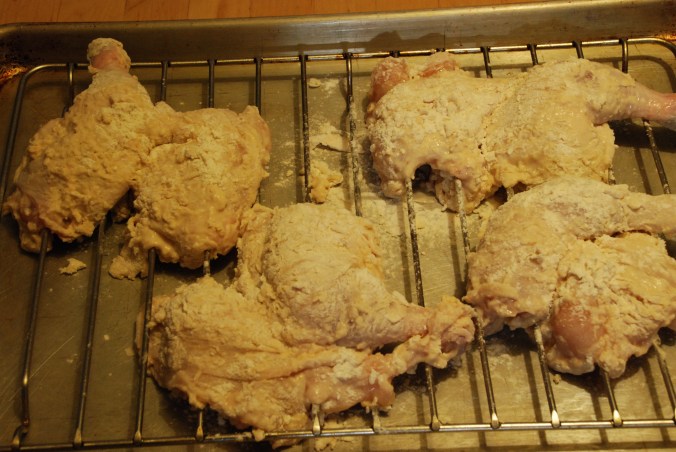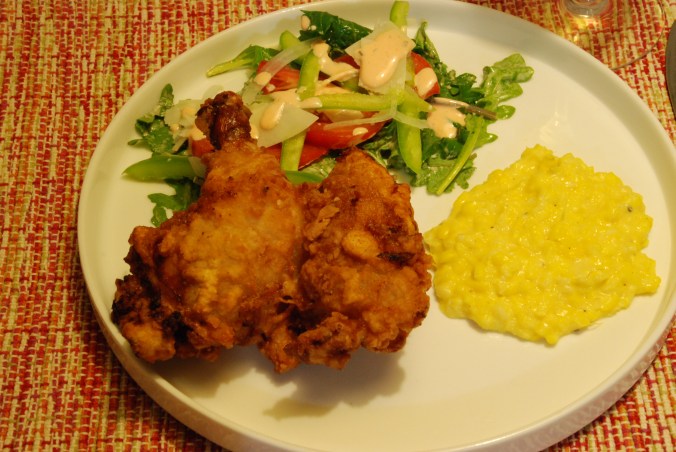When I mentioned to Calvin yesterday that I intended to do something for tonight’s dinner with some Cornish hens I knew were in our freezer, he quickly referred me to a recipe he had found online.
Mr. Emeril Lagasse, it seems, at some point saw fit to type into his computer a recipe for “Greens and Fried Quail with Buttermilk Dressing.”
Calvin then saw fit to post the recipe to his Facebook page, drawing scads of enthusiastic comments from people who know him and who believed I would, as they say, whip the dish right up.
I succumbed to the weight of Facebook pressure while pointing out delicately that we in fact had no quails in our freezer at all. What we had were two Cornish game hens. It’s a fine point but a significant one when you’re working out algorithms of oil temperature and cooking time and such.

It is mostly irrelevant to tonight’s meal, by the way, but it occurs to me to mention that whenever I hear the word “Cornish” I think of pasties. Do you know what a Cornish pasty is?
Even before my 1982 visit with my mother to the Upper Peninsula of Michigan, where many people of Cornish ancestry live and where some of them operate shops in which they sell pasties, I knew what pasties were. What I didn’t quite know was how to pronounce the word.
Mama and I stopped at a pasty shop in Marquette one day. She stayed in the car while I went into the shop to procure a pasty or two for the road.
(We were on a road trip from San Antonio to Ann Arbor, where I was enrolled in the University of Michigan. Do not try to understand how Marquette is on anybody’s idea of a route from San Antonio to Ann Arbor because it’s not. Driving from San Antonio to Ann Arbor through Marquette is like driving from San Antonio to Amarillo through Cincinnati.)
When I asked for a “paste-y” — pronounced as if I were referring to someone’s pallid complexion or a sternal adornment of a middling stripper — the woman behind the counter froze for a half-second and then erupted in hysterical laughter.
“It’s PAST-y but that’ll be five dollars,” she said, wiping a tear from her sweaty cheek with a grease-stained towel she had drawn from her apron.
But as I said, that’s mostly irrelevant right now.
The important thing about Mr. Lagasse’s recipe is that his quails’ bones were removed before they were cooked — all of them except those in the birdies’ legs.
I knew this maneuver would help ensure uniform cooking, so I removed the hens’ bones — all of them except those in the legs.
This surgery was performed with the help of two knives I purchased some years back at a cooking supply store in Paris called Dehillerin.
Dehillerin is mecca for cooks. In it you can buy mushroom knives (I have), paring knives (several, over several visits), chef’s knives (oui), slicing knives, and knives for chicken, chestnuts and cheese.
At Dehillerin you can spend several hundred dollars on a pan in which you will cook nothing but a turbot (I have not).
When you ask for a knife at Dehillerin the salesman will ask you back, “Carbone ou inox?”
Inox is stainless steel, which can make a very swell knife. A stainless steel knife is like a Ford. It can mean many things.
Carbon steel, on the other hand, makes a knife for the ages. It is Ferrari. Carbon steel takes an edge like a dream.
The problem with carbon steel is it stains.
After you chop onions or relieve a chicken of its backbone, you would be quite reasonable to set down your knife and go about other kitchen evolutions.
But if your knife is made of carbon steel, when you have finished your meal and you return to the kitchen you will find to your dismay that your knife’s blade has developed stains. You will rush to the sink and scrub, scrub, scrub, but the stains will not disappear.
When you use a knife whose blade is made of carbon steel you must stay ever-vigilant and wash and dry it almost as soon as you have finished using it.
Here are the Dehillerin carbon steel knives I used on tonight’s hens.
The cork, by the way, is what the Dehillerin guys stick on your tip when you buy a knife.
And here are the birds themselves — backless, breastboneless and wingless.
As Mr. Lagasse’s recipe specified, the hens bathed for several hours in buttermilk, sassed up a bit with Louisiana hot sauce, dried creole seasoning and smushed garlic.
The birds took not one but two dunks in flour. A pool of hot oil awaited them.
Once the oil reached 325 degrees it was ready to receive.
We did not make Emeril’s buttermilk dressing tonight. Calvin, with great inventiveness, enhanced bottled ranch salad dressing with Sriracha sauce and sesame oil. The result was exquisite.
In addition, I adorned the plate with creamed corn, which I made, quite unimaginatively, with freshly-grated corn and cream.
If I do say so, this was a pleasant meal to eat.







